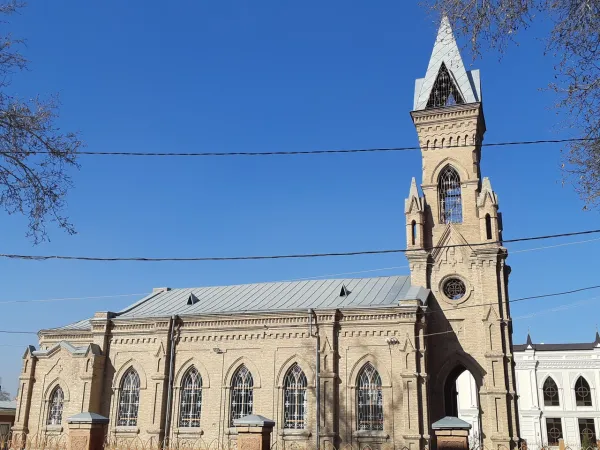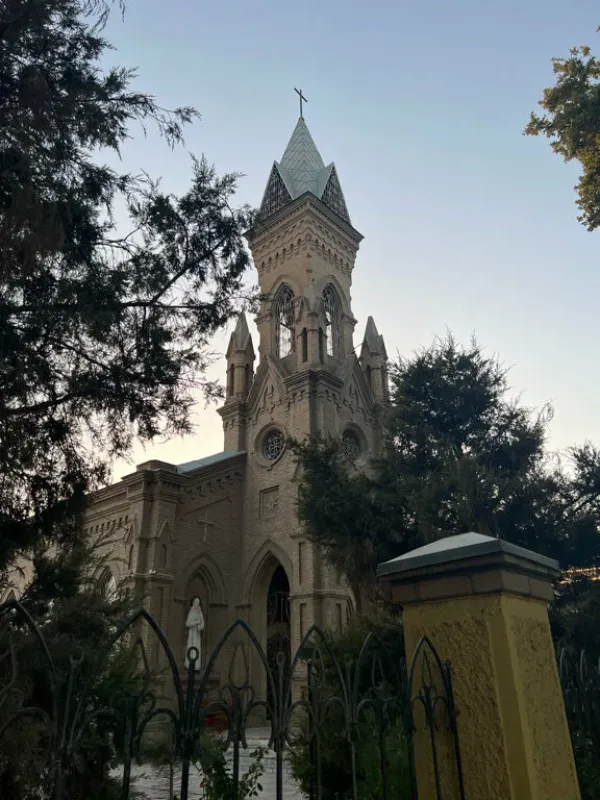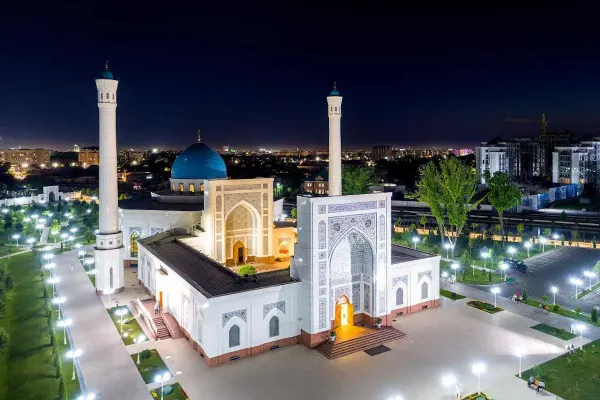St. John the Baptist Church in Samarkand
The Roman Catholic Church of St. John the Baptist is a Catholic parish that is part of the administration of the Apostles of Uzbekistan in Samarkand.
History
At the end of the 19th century, Uzbekistan began to be populated by European military personnel as part of the Russian army, as well as civilians — merchants, entrepreneurs and officials. By about 1905, there were so many of them that many of them had the idea to build a Catholic parish in Samarkand. The initiative group applied for permission to build a church in the Turkestan diocese, but, unfortunately, was refused.
Due to the arrival of a huge number of Catholic prisoners of war from European countries (Poland, Austria, Hungary, Germany) in the city in 1915 during the First World War, the community was finally able to obtain approval for the construction of a church. For the construction of the parish, the city government donated a plot of land in the area of a modern street named after the outstanding philologist Mahmud Koshgaria. The project according to which the cathedral was built was designed by the famous architect Nelle. The Church of St. John the Baptist in Samarkand, owned by the Catholic concession, was built from 1915 to 1916.
Since 1917, during the Soviet period of communist rule, the temple did not function, its premises were closed and transferred to state control. All religious symbols were removed from the landmark, and a gym was located in the cathedral building at that time. In 1988, it was decided to equip a hall with an organ inside the cathedral and even all the necessary papers were prepared, but they did not have time to realize the idea, since the Soviet Union collapsed.
At the suggestion of clergyman Father Ivan Roloff, at the end of 1995, the formation of a Catholic parish was recorded in the Samarkand municipality. Two years later, in 1997, the church was transferred to its jurisdiction after a meeting at the state level between Archbishop Marian Olesya (the Vatican's Ambassador to Central Asia) and President Islam Abduganievich Karimov. The Church of St. John the Baptist was consecrated in the spring of 1999.
At various times, such well-known personalities in Uzbekistan as Father Tadeusz Glusec, Father Fratsisk Stopkovich, and Father Lucian Szymanski served as abbots of the temple. They were assisted by Franciscan brothers: Jakub Yamruz and Stanislav Wrzaszczak. Currently, the head of the parish is a clergyman named Peter Kava, who belongs to the order of Franciscan friars.
Since March 1999, every visitor to the church can enjoy Mass in three languages: Russian (Tuesday to Saturday at 17:30, Sunday at 11:00), English and German.
Architecture
The Church of St. John the Baptist in Samarkand is built in a mixed Romanesque style with elements of classicism, Gothic and Baroque. The temple building looks like a massive fortress with solid walls of light brown stone and massive fortifications. The building has a classic one-story shape, includes pointed arched windows and a gable roof. A tall bell tower is attached to the church, decorated with elegant turrets and a pointed roof. The altar apse is located on the reverse side of the building.
Inside the landmark there is an impressive altar, a huge icon that occupies the entire space, starting from the floor itself and ending with the ceiling, and a very large crucifix. On both sides of the altar there are monuments to Jesus Christ and the Virgin Mary. The interior of the church itself is very modest, which corresponds to Catholic traditions. The walls of the temple are decorated in bright colors, and there are traditional benches for visitors throughout the building.























